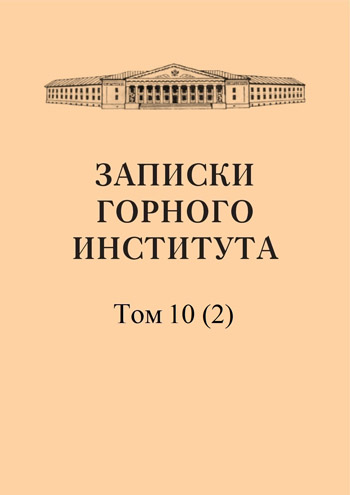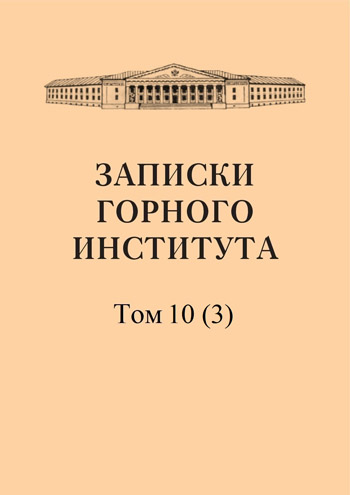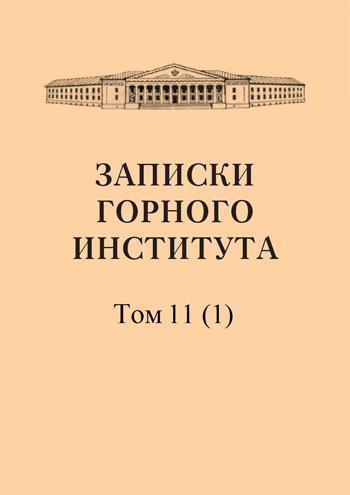-
Date submitted1936-08-18
-
Date accepted1936-10-17
-
Date published1937-02-01
X-ray examination of shungite, anthracite and coal
- Authors:
- A. K. Boldyrev
- G. A. Kovalev
As we know, the X-ray method can be used in mineralogy (and in all branches of science and technology that rely on it) to solve a number of problems. The objectives of our research are to answer a number of the following questions. The answers to these questions should shed light on the nature of the substance of various coals, they can provide a new way for an accurate quantitative method of distinguishing coals from each other, one can expect that this method of distinguishing coals will help the geological parallelization of individual coal seams. In the future when linking X-ray properties with chemical ones with the help of analyzes and determinations of the thermal properties of coal, it becomes possible to learn from X-ray photographs of coal to judge, at least to some extent, about its qualities as a fuel. We have specified our immediate work as follows: to take Debye patterns of a successive series of minerals: graphite, shungite, anthracite and coal and discuss the results obtained.
-
Date submitted1936-08-11
-
Date accepted1936-10-09
-
Date published1937-02-01
Nomenclature and symbolism of space symmetry groups
- Authors:
- V. V. Dolivo-Dobrovol'skii
The developed symbolism makes it possible to solve the problem in the same way and simply in the most general case: given (using a model, drawing or other way) a regular system of points or a combination of several regular systems of points forming a crystal lattice; it is required to find the space symmetry group of this set. We will not present a systematic approach to solving this problem here; we will only point out that the matter comes down to writing the group symbol. To avoid possible errors in choosing orientation and correctly selecting the generating element of symmetry among the set of parallel elements of symmetry of a given direction, a simple “determinant” of space groups has been compiled. Using this determinant, it is possible to determine a group, even if the found group symbol does not correspond to the accepted one for this group. The compilation of such a determinant and a systematic presentation of the progress in solving the problem posed above is the work of the author that has already been completed. The second significant consequence of the proposed symbolism is the ability to carry out a new simple and systematic derivation of 230 space groups.
-
Date submitted1936-08-02
-
Date accepted1936-10-25
-
Date published1937-02-01
Tables for calculating tetragyric (tetragonal) crystals
- Authors:
- V. V. Dolivo-Dobrovol'skii
- V. F. Alyavdin
As we know, in the angular ratio, tetragaric crystals are characterized by only one crystallographic constant. No matter how simple the given formulas are, to simplify and facilitate calculations, V. M. Goldshmidt, O. M. Ansheles, V. V. Dolivo-Dobrovol'skii, G. V. Barker, as well as other crystallographers-calculators, resorted to special ones, once and forever compiled tables, wholly or partly replacing logarithm by simply finding answers from tables. Massive crystallographic calculations carried out while working on the Determinant of Crystals forced its compilers to use these tables. However, in addition to these ready-made tables of Goldschmidt, Ansheles, Dolivo-Dobrovol'skii and Barker, for the speed of calculations, the authors of this article compiled some more tables, which, together with the first ones, should finally simplify all crystallographic calculations of tetragyr crystals. The ease of working with the compiled tables makes it rational to publish them for general use.
-
Date submitted1936-08-06
-
Date accepted1936-10-07
-
Date published1937-02-01
On the issue of a new classification of vertebrates
- Authors:
- A. N. Ryabinin
The modern division of vertebrates into cyclostomata (Cyclostomata), fish (Pisces), amphibians (Amphibia), reptiles (Reptilia) and mammals (Mammalia), usual and satisfactory when reviewing the modern world of animals, is completely unsatisfactory and vulgar at the first attempt at distribution it on the world of living creatures of past geological eras. The question arises: is it not time to revise the old classification of vertebrates and build it on newer scientific foundations? The progress of research in the department of vertebrate paleontology has made the task of a new classification of the vertebrate group urgent. Taking this into account, the author presents the views of the Swedish scientist G. Säve-Söderbergh, which are set out in his article “Some points of view on the evolution of vertebrates and the classification of this group”, an archive for zoologists who claim pr. K. Svenska Vetenskapsakademien, Bd. 26, Stockholm, 1934 and in the accompanying table. Whatever the inadequacy of the classification proposed by Mr. Säve-Söderberg, it can, in the opinion of the author, provide the opportunity for a fruitful discussion of the problem, it also points to its insufficiently studied areas and thus contributes to the solution of this problem.
-
Date submitted1936-08-23
-
Date accepted1936-10-21
-
Date published1937-02-01
A note on finds of Mosasauria in the Pechora region and on the eastern slope of the Urals
- Authors:
- A. N. Ryabinin
In 1931 and 1935, I managed to get acquainted with the remains of Mosasauria from two different areas where they had not yet been observed and where their finding, in addition to paleontological, is of great stratigraphic interest. One find in the Pechora region was made by Prof. A. A. Chernov in 1930 in the light gray sandstones of the Lemva River, the left tributary of the Usa River, which flows into the Pechora from the right. An exact determination of the genus and species is not yet possible. It should only be noted that the highly elongated cylindrical shape of the vertebral body is similar to the shape of the caudal vertebrae of North American Mosasauria. The paleontological interest of the find is undoubted: it promises to provide new, more complete remains of the skeleton of Mosasauria, and stratigraphically reliably determines the Upper Cretaceous age of marine sediments on the eastern slope of the Middle Urals.
-
Date submitted1936-08-08
-
Date accepted1936-10-20
-
Date published1937-02-01
Materials on the study of Khalilovskii iron ores
- Authors:
- L. M. Keppen
The research sector of the Leningrad Mining Institute, during the period from June 1, 1934 to June 1, 1935, studied the iron ores of the Khalilovskoye and Akkermanovskoye deposits under an agreement with Khalilkombinatstroy. One of the tasks was the mineralogical study of ore formations, the result of which is presented in this work. During the work, a section of the ore strata was established and a gradual change in the section from lower to upper horizons was established. The mineralogical composition of the ores and the ratio of individual components were determined. The method of thermal analysis was applied, the heating and dehydration curves of the isolated ore components were determined. The X-ray analysis method was also used. Thermal analysis was carried out in the laboratory.


